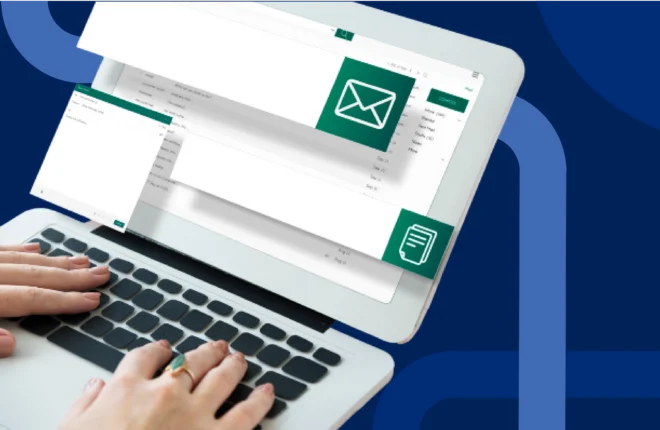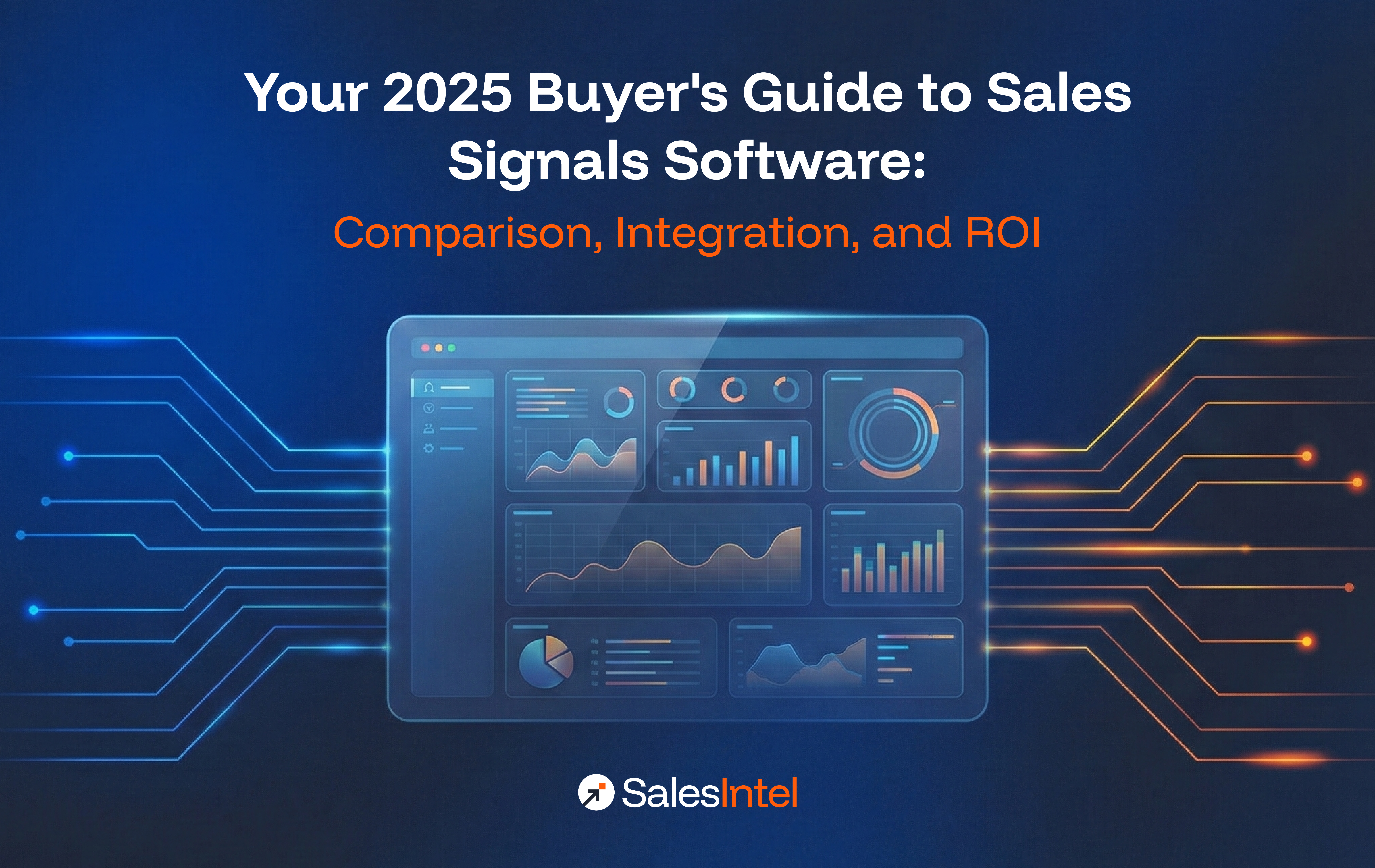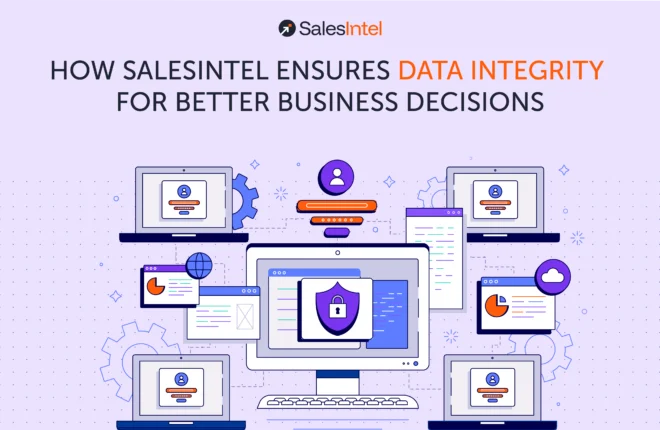Email remains a dominant communication channel for marketers and sales teams. However, the quality of your email list can make or break your campaigns. Verified emails – those that have been confirmed as accurate and active – are essential for effective marketing, sales outreach, and, ultimately, revenue generation.
The Importance of Using Verified Emails
Verified emails ensure that the contacts you are reaching out to are real, active, and likely to engage with your messages. Whether you’re driving marketing campaigns or crafting personalized sales outreach, using verified email addresses increases the chances of your emails landing in the right inbox. This, in turn, improves open rates, response rates, and overall campaign success.
On the other hand, unverified emails are a gamble. They could be outdated, non-existent, or even spam traps, which can lead to a host of negative consequences for your business.
The Risks of Using Unverified Email Lists
Using unverified email lists comes with several risks that can harm both your marketing performance and sender reputation. One of the biggest challenges is the high bounce rate that unverified emails tend to produce. When emails are sent to invalid or inactive addresses, they bounce back, signaling to email service providers (ESPs) that your content is potentially spam. Over time, a high bounce rate will lower your sender score and negatively impact your deliverability, meaning fewer of your emails will reach recipients.
Another key risk is the low deliverability associated with unverified emails. When ESPs detect frequent bounces or spam complaints, they may classify your domain as suspicious, pushing your emails directly into the spam folder. Worse, sending to unverified or non-existent addresses can lead to blacklisting by ISPs, significantly limiting your ability to engage with your audience.
Additionally, unverified email lists can lead to wasted marketing resources. You’re investing time, effort, and money into nurturing leads that may not even exist. This inefficiency can quickly drain resources and limit your ability to achieve revenue goals.
Further, this article will help you understand how to effectively buy email lists with only verified emails, ensuring high-quality data that drives better results in marketing and sales. Whether you’re looking to expand your outreach or improve conversions, this guide covers key aspects of purchasing and using email lists for business success.
- Data Quality Is Key In Email List
- Should You Build Or Buy Email List for Marketing?
- Higher the Bounce Rate Hurts Your Brand
- Find the CEO’s Email, CEO’s Phone Number
- Find Anyone’s Business Email Address
- Build a High Conversion Email List
- Expand Your Email Marketing List
- From Bounces to Wins: OppGen’s Journey to Precise Targeting
1. Data Quality is Key When You Buy Email List
When it comes to email marketing, data quality is paramount. The effectiveness of your campaigns hinges on the accuracy, relevancy, and freshness of your email lists. Poor-quality data can lead to wasted marketing efforts, spam complaints, and missed revenue opportunities. On the other hand, high-quality, verified data ensures your emails reach the right inboxes, maximizing engagement and return on investment (ROI).
Why Data Quality Matters When You Buy Email Lists
When you buy an email list, the quality of the data you’re purchasing can make a significant difference in the outcomes of your marketing and sales outreach efforts. If the email addresses in the list are outdated, inaccurate, or inactive, your emails are unlikely to reach the intended recipients. This not only reduces your campaign effectiveness but also risks damaging your sender reputation.
What Makes an Email “Verified”?
A verified email means that the email address has been checked and confirmed as valid and active. Various verification methods are used to ensure email quality, including:
- Syntax Checks: These identify email addresses that are incorrectly formatted or contain invalid characters.
- Domain Verification: This process checks whether the domain (e.g., gmail.com or companyname.com) exists and is currently active.
- Mailbox Verification: This ensures the email inbox is active and able to receive messages, confirming the address is in use.
- User Activity Checks: Some advanced email verification tools can even track user activity to verify that the address belongs to a real person who has engaged recently.
Without these verification steps, there’s a higher likelihood of including invalid addresses in your email list, resulting in higher bounce rates, lower engagement, and negative consequences for your marketing efforts.
Consequences of Using Poor-Quality Email Lists
If you use an email list that hasn’t been properly verified, you risk serious repercussions. Poor-quality lists can result in:
- Wasted Marketing Resources:
Sending emails to invalid or inactive addresses wastes both time and money. You could be spending valuable resources on campaigns that never reach the intended audience.
- Spam Complaints:
When users receive irrelevant or unsolicited emails, they are more likely to mark them as spam. A high number of spam complaints can hurt your sender reputation and reduce deliverability.
- Inaccurate Targeting:
Low-quality lists often contain outdated data, meaning you’re sending your emails to people who may no longer be interested in your offerings. This results in poor targeting and lower conversion rates.
2. Should You Build or Buy Email List for Marketing?
The decision to build or buy an email list depends on your business goals, resources, and timeline. Both approaches have their own advantages and challenges, so it’s important to understand the pros and cons of each.
Building Your Own Email List
Building your own email list involves collecting email addresses directly from potential customers through various lead generation efforts, such as:
- Website sign-ups
- Content downloads (e.g., ebooks or whitepapers)
- Webinars and events
- Social media engagement
Pros of Building Your Email List
- Control Over Lead Generation: Building your list gives you complete control over who joins, ensuring the contacts are highly relevant and interested in your brand.
- High Engagement Rates: Since your audience opted in to receive communications from you, they’re more likely to engage with your content and convert.
- Compliant with Regulations: Self-built lists are more likely to comply with email marketing regulations, as the contacts have voluntarily provided their information.
Cons of Building Your Email List
- Slow Growth: Building a list organically takes time, making it less ideal for businesses that need immediate access to leads.
- Resource-Intensive: Collecting and nurturing leads requires continuous effort, from creating content and landing pages to running promotional campaigns.
Buy Email List
Buying an email list provides quick access to a large number of pre-verified email addresses, allowing you to jumpstart your marketing efforts.
Pros of Buying an Email List
- Speed and Volume: Purchasing a list allows you to acquire thousands of contacts instantly, giving you a head start in your outreach.
- Access to Pre-Verified Contacts: Quality email list providers offer lists with verified, up-to-date email addresses, saving you the time and effort of manually verifying each one.
Cons of Buying an Email List
- List Fatigue: Purchased lists may contain contacts that have already been marketed to by other companies, reducing the likelihood of engagement.
- Data Inaccuracies: Some email list providers may not update their lists frequently, leading to inaccurate or outdated information that harms your campaigns.
When to Build vs. Buy Email List
Here’s a guideline to help you decide when to build or buy email list:
- Build Your List if you have the resources and time to grow it organically. This is ideal for businesses that want to engage a highly-targeted audience over the long term.
- Buy an Email List if you need quick access to leads or if you’re entering a new market and don’t have an existing audience. This can be especially useful for time-sensitive campaigns or when scaling your sales efforts rapidly.
3. Higher the Bounce Rate Hurts Your Brand
A high email bounce rate can significantly damage your brand’s reputation and overall marketing efforts. When emails bounce, it means they weren’t delivered to the recipient’s inbox, either due to invalid email addresses, a full inbox, or server issues. The more frequently this happens, the worse your sender reputation becomes with email service providers (ESPs). Over time, ESPs may flag your domain as spam or blacklist it, making it harder for future emails to reach intended recipients.
Additionally, a high bounce rate reflects poorly on your email list hygiene and data quality. This leads to wasted marketing resources—time, money, and effort spent on sending emails to non-existent addresses, which yields no return on investment. Moreover, consistent bounces can lead to low engagement rates, as undelivered emails fail to generate opens, clicks, or conversions, thereby diluting the effectiveness of your campaigns.
Beyond technical issues, a poor sender reputation can also erode customer trust. If legitimate customers start seeing your emails land in their spam folders, they might perceive your brand as unreliable or unprofessional. This can lead to long-term damage to your relationship with prospects, especially in competitive industries where trust is key.
To prevent such issues, it’s crucial to maintain a clean email list with verified, high-quality contacts. Using email verification tools and frequently updating your lists will help reduce bounce rates, protect your sender reputation, and improve your campaign performance.
For a deeper dive into how email bounces can hurt your sales and marketing efforts, download our free eBook, which covers best practices and strategies for maintaining a clean, high-performing email list.
4. Find the CEO’s Email, CEO’s Phone Number
Finding the CEO’s email and phone number can be a game-changer for sales and marketing professionals looking to connect directly with decision-makers. Accessing such high-level contact information can significantly shorten the sales cycle and lead to more personalized, meaningful engagements.
There are several ways to track down a CEO’s email and phone number. Tools like Hunter.io, SalesIntel, and Apollo.io offer databases with verified business contacts, including C-suite executives. These platforms use advanced algorithms to ensure data accuracy, helping you reach the right people without wasting time on dead-end leads. Additionally, you can leverage LinkedIn and other professional networks to find email patterns (e.g., first.last@domain.com), which you can then verify using email verification tools.
However, it’s essential to handle this information with care. Cold outreach to CEOs should be tailored, relevant, and respectful of their time. A well-crafted message that addresses their business needs will go a long way in securing their attention and engagement.
For more in-depth strategies and tools to find a CEO’s contact information, check out our detailed blog, where we walk you through each method step-by-step. It includes actionable tips and advanced techniques to make sure your outreach efforts are both effective and compliant.
Read About – How to Find CEO Emails and CEO Phone Number
5. Find Anyone’s Business Email Address: Techniques for Sales and Marketing Teams
Finding verified business email addresses is crucial for any sales and marketing strategy focused on reaching the right prospects efficiently. There are multiple techniques available to help sales teams identify and verify business emails, ensuring higher deliverability and engagement rates.
One of the most popular methods is using email finder tools such as Hunter.io, RevDriver, and SalesIntel. These platforms enable users to search for emails based on company domains or specific names. They include integrated verification processes to ensure that the emails are valid and active, reducing the likelihood of bounces and enhancing outreach success.
For teams that prioritize real-time data accuracy, using tools with real-time verification features is a solid option. Solutions like SalesIntel offer advanced email validation by checking emails against active servers and verifying the reachability of inboxes, ensuring only valid contacts are added to your list.
Additionally, you can manually verify business email formats using standard naming conventions (e.g., first.last@company.com . Pairing these conventions with research from platforms like LinkedIn allows sales teams to identify decision-makers and reach out effectively.
Advanced B2B platforms go beyond just email addresses, offering insights into firmographics and intent data, making it easier for your team to target the right person at the right time.
For a deeper dive into these techniques and tools, read our detailed blog on how to find verified business emails. It covers additional strategies and tips to optimize your lead generation efforts.
6. Build a High Conversion Email List
Whether you’re building one from scratch or purchasing a verified list—requires careful planning and strategy. Segmentation is one of the most effective ways to optimize your email list. By grouping contacts based on firmographics (such as company size or industry), intent data (which signals purchase intent), and past behaviors, you can target your audience more effectively. This approach ensures that your messaging is relevant, which in turn boosts engagement and leads to higher conversion rates.
Another critical factor is personalization. Crafting tailored email campaigns for each segment helps address your audience’s specific needs and challenges, leading to higher open rates and better overall campaign performance. Personalization allows you to speak directly to recipients, driving meaningful interactions and improved conversion outcomes.
If you’re using purchased email lists, it’s vital to ensure they consist of clean, verified data. Clean email lists reduce the risk of high bounce rates, while verified data ensures your messages reach the right recipients. To enhance your process, integrate the list with CRM tools, enabling automated tracking, lead scoring, and timely follow-ups, which further streamline your sales funnel and improve overall conversion rates.
Finally, implement best practices when managing purchased lists, such as gradually warming up email addresses and nurturing leads over time. Proper list management, combined with segmentation and personalization, will significantly increase your chances of success.
For a more detailed exploration of these strategies, check out our comprehensive blog on how to build a high-conversion email list.
7. Expand Your Email Marketing List the Right Way
Lastly, expanding your email marketing list requires a careful balance between speed and quality. To scale your list effectively, consider partnering with reliable email list providers that offer verified, intent-based data. This ensures that the new contacts you add are both relevant and engaged, reducing the risk of high bounce rates or spam complaints, and enhancing the effectiveness of your marketing campaigns.
In addition to purchasing lists, you can also employ organic growth strategies like lead magnets (offering valuable content in exchange for email addresses), social media campaigns, and content marketing. These methods not only help you attract new subscribers but also ensure that your growing list consists of engaged individuals, increasing long-term success.
It’s also crucial to maintain clean data hygiene. Use tools to verify new leads, remove duplicates, and monitor ongoing list health. This ensures that your email list remains accurate, reducing deliverability issues and keeping your sender reputation intact.
For example, adding high-quality, verified contacts can significantly improve open rates, increase engagement, and lead to a higher ROI for your email marketing efforts. By following best practices for data hygiene and strategic list-building, you’ll expand your list in a way that drives sustainable business growth.
For more detailed insights on expanding your email marketing list the right way, read our comprehensive blog on list-building strategies and best practices.
FAQs
What is the average ROI from using purchased email lists?
The average ROI from purchased email lists is typically very low or even negative due to poor data quality and engagement issues. High bounce rates, low open rates, and spam complaints damage your sender reputation and waste resources. SalesIntel’s verified, compliant contact data delivers superior ROI through targeted outreach that actually reaches engaged prospects.
Why do email marketing platforms prohibit purchased lists?
Email platforms like Mailchimp and HubSpot ban purchased lists because they contain outdated contacts and people who never opted in, leading to high bounce rates and spam complaints. These issues hurt deliverability for all platform users and create legal compliance risks. Platforms enforce these rules to protect service quality and keep users out of regulatory trouble.
Can you buy email lists?
Yes, you can buy email lists from data brokers and lead generation companies, but it comes with major drawbacks. Purchased lists typically have low accuracy, poor engagement, and compliance issues with GDPR and CAN-SPAM regulations. SalesIntel offers a smarter alternative – verified, dynamically updated B2B contact data that outperforms traditional bought lists.
Is buying email lists legal?
Buying email lists is technically legal, but using them often violates data privacy laws. Sending unsolicited emails to purchased contacts without consent breaks GDPR, CCPA, and CAN-SPAM regulations, exposing you to hefty fines and reputation damage. SalesIntel emphasizes ethical data sourcing and compliance, ensuring your outreach is both legal and effective.
What should I consider when choosing an email list provider?
Prioritize data accuracy, regulatory compliance, and contact relevance when selecting an email list provider. Evaluate their data sourcing methods, verification processes, and how frequently they update records. SalesIntel offers granular segmentation, human-verified data, and transparent compliance standards to ensure your outreach is both effective and ethical.
What are alternatives to buying email lists?
Instead of buying lists, focus on building organic, permission-based databases through content marketing, SEO, social media engagement, webinars, and website lead capture. B2B intelligence platforms like SalesIntel provide verified contact data without the risks of traditional purchased lists. These approaches deliver higher-quality leads and ensure compliance with data privacy regulations.
Which email list providers are GDPR compliant?
GDPR-compliant providers obtain proper consent, ensure data accuracy, and maintain transparent processing practices to protect EU citizens’ privacy. While many claim compliance, verify their methods carefully, non-compliance can result in severe penalties. SalesIntel prioritizes data privacy and continuously updates practices to align with GDPR and other global regulations.
What are specific tools or services for email list verification?
Email verification tools like Hunter.io, ZeroBounce, and NeverBounce check email validity and deliverability to reduce bounce rates and protect sender reputation. These services identify invalid, temporary, or risky addresses before you send campaigns. SalesIntel goes a step further by providing pre-verified, high-quality contact data, minimizing the need for external verification tools.
Where can I buy email lists?
Email lists are available from B2B data providers and lead generation companies that compile contacts by industry, company size, or job role. However, traditional “bought” lists often have quality and compliance issues. SalesIntel offers a superior alternative – access to verified, compliant B2B contact data through a modern intelligence platform designed for targeted, effective outreach.










